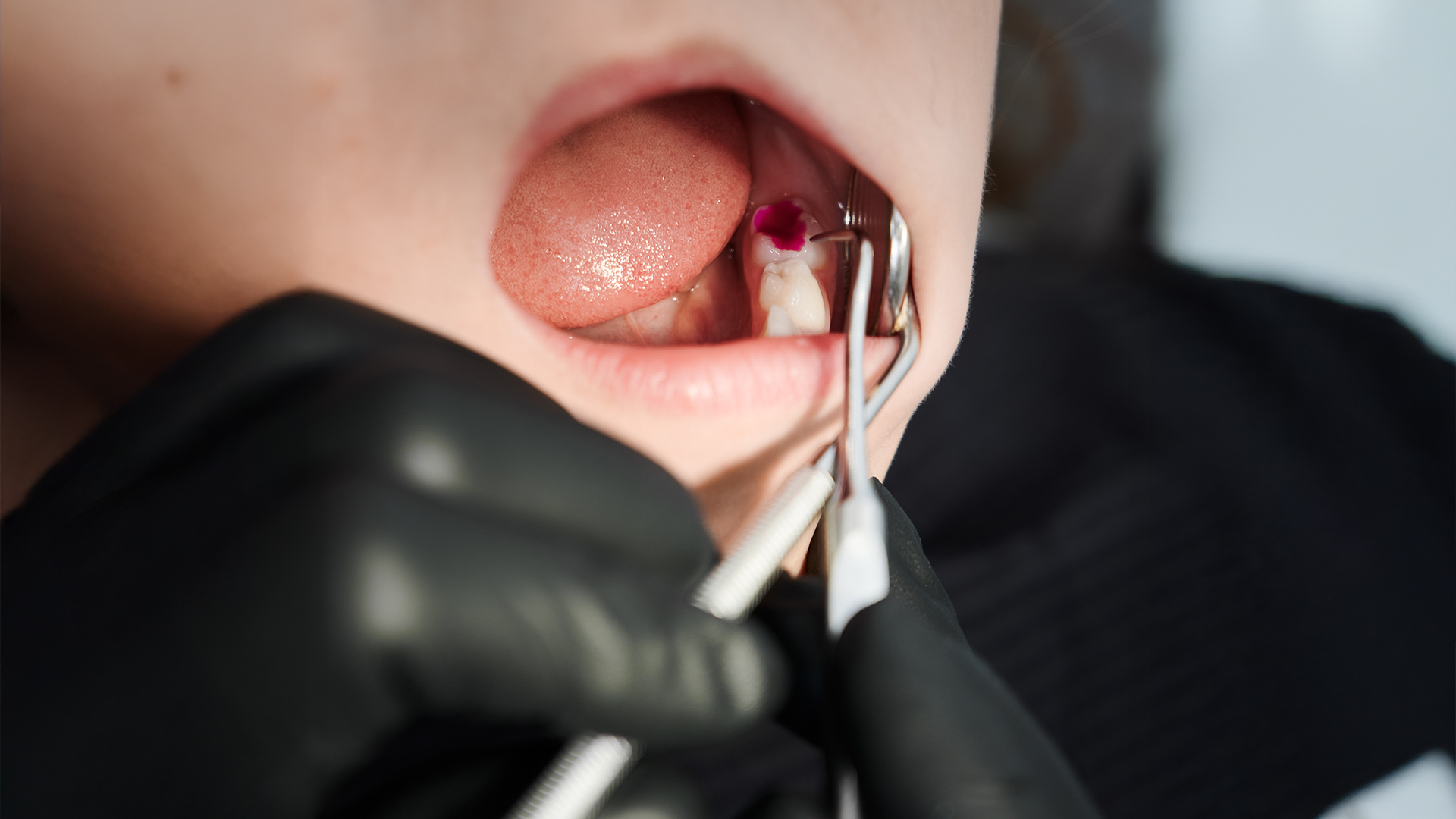Ever felt that sharp, unmistakable jolt when sipping your morning coffee? That shooting pain from a root canal infection isn’t just annoying, it’s your body waving a massive red flag.
Most people are unaware that over 15 million root canal procedures are performed annually in the US alone, with many being potentially preventable.
In this guide, we’ll break down exactly what causes those nasty root canal infections and give you practical steps to keep your teeth healthy and pain-free.
Because let’s be honest, nothing ruins your day faster than dental pain that makes you want to climb the walls. And the worst part? Most people are making simple mistakes every day that set them up for trouble.
So what’s happening inside that tooth of yours?
What Is a Root Canal Infection?
A root canal infection occurs when bacteria invade the innermost part of a tooth, known as the dental pulp. This soft tissue contains nerves, blood vessels, and connective tissue that extend from the crown to the roots, forming the root canal system.
When tooth decay progresses deeply or when a tooth suffers trauma, bacteria can penetrate this normally protected space, leading to infection.
Symptoms of Root Canal Infections
Root canal infections don’t appear suddenly. They develop gradually, often presenting these warning signs:
- Persistent, severe toothache
- Sharp pain when biting or chewing
- Prolonged sensitivity to hot or cold temperatures
- Darkening or discoloration of the affected tooth
- Swelling and tenderness in nearby gums
- A pimple-like bump on the gums near the infected tooth
- Bad breath or unpleasant taste
The Infection Process
The infection typically follows a predictable path:
- Bacteria enter the pulp through deep decay, cracks, or chips
- Pulp tissue becomes inflamed and infected.
- Infection spreads through the root canal system.
- Pressure builds inside the tooth, causing pain.
- Infection may form an abscess at the root tip.
Without treatment, the infection can spread beyond the tooth, potentially affecting surrounding bone, adjacent teeth, and in rare cases, causing systemic health issues. The body’s immune system cannot effectively fight infections inside teeth because once the pulp dies, blood supply to the area is cut off, preventing immune cells from reaching the bacteria.
What Causes a Root Canal Infection?
Root canal infections occur when bacteria invade the inner pulp chamber of a tooth. This typically happens through several pathways:
Deep Decay
When tooth decay penetrates deep into the tooth structure, bacteria can reach the pulp tissue. Cavities that remain untreated for extended periods create perfect pathways for bacterial invasion, leading to infection of the root canal system.
Cracked or Fractured Teeth
Cracks and fractures in teeth, whether from trauma, grinding, or biting hard objects, create openings for bacteria to enter the pulp chamber. Even microscopic cracks invisible to the naked eye can provide entry points for bacteria.
Failed Dental Procedures
Previous dental work that has deteriorated or failed can expose the inner tooth to bacteria, potentially leading to further complications. Leaky fillings, loose crowns, or incomplete root canal treatments create vulnerability to infection.
Repeated Dental Procedures
Multiple procedures on the same tooth can stress the tooth structure and increase infection risk. Each procedure potentially exposes the pulp to new bacteria.
Trauma
Physical impact to teeth can damage blood vessels and nerves without visible external damage. This trauma can lead to pulp death, creating an environment where infection thrives.
Gum Disease
Advanced periodontal disease can spread infection from the gums to the root tips through periodontal pockets, eventually affecting the root canal system.
Extreme Wear
Teeth grinding (bruxism) or erosion from acidic foods and drinks can wear down enamel and dentin, reducing the protective barrier between oral bacteria and the pulp chamber.
Early detection through regular dental checkups significantly reduces the risk of developing root canal infections and may prevent the need for more extensive treatments.
What Are the Risks of Leaving a Root Canal Infection Untreated?
Ignoring a root canal infection isn’t just risky, it’s potentially dangerous. What starts as a toothache can quickly escalate into serious health complications when left untreated.
Spreading Infection
Root canal infections don’t stay contained. The bacteria can move beyond the tooth root and create abscesses, pockets of pus that form at the root tip. These abscesses can spread infection to:
- Surrounding facial tissues, causing visible swelling
- Nearby teeth, compromising their health
- Jawbone, leading to deterioration.
- Sinus cavities, resulting in sinusitis
In severe cases, the infection can enter the bloodstream, creating a systemic infection that affects the entire body.
Increased Pain and Discomfort
The mild discomfort initially felt will inevitably worsen. The pain can become:
- Intense and throbbing
- Radiating to the jaw, ear, and neck
- Disruptive to eating, speaking, and sleeping
- Persistent and unresponsive to over-the-counter pain medications
Tooth Loss
Without proper treatment, the infected tooth will continue to deteriorate. The internal structures break down, weakening the tooth until extraction becomes the only option. Losing a tooth creates additional problems:
- Shifting of adjacent teeth
- Difficulty chewing
- Changes in bite alignment
- Bone loss in the jaw
- Potential need for costly restorative procedures
Serious Health Complications
In rare but dangerous situations, untreated dental infections can lead to:
- Ludwig’s angina: severe swelling under the tongue that can block airways
- Brain abscess: an infection that spreads to brain tissue
- Endocarditis: infection of the heart’s inner lining
- Sepsis: life-threatening response to infection throughout the body
Addressing a root canal infection promptly isn’t just about saving a tooth; it’s about protecting overall health and well-being.
What Are the Signs and Symptoms of a Root Canal Infection?
Pain and Discomfort
Root canal infections often announce themselves through persistent, throbbing pain. This pain typically intensifies when biting down or applying pressure to the affected tooth. Unlike occasional tooth sensitivity, the pain from an infected root canal rarely subsides on its own and may worsen at night, disturbing sleep patterns.
Temperature Sensitivity
Extreme sensitivity to hot and cold foods or beverages serves as a common warning sign. When this sensitivity lingers long after the temperature stimulus has been removed, it suggests nerve damage within the tooth. What starts as mild discomfort can progress to sharp, shooting pain that radiates throughout the jaw.
Gum Swelling and Tenderness
Look for swelling and tenderness in the gums surrounding the affected tooth. This swelling might appear as a small, pimple-like bump on the gum, known as a dental abscess. Pressing on this area often produces pain and sometimes even releases pus, indicating active infection.
Tooth Discoloration
A darkening or discoloration of the affected tooth often signals a dying nerve inside. The tooth may take on a greyish, yellowish, or even blackish tint compared to surrounding teeth. This change happens gradually as the internal tissues break down due to infection.
Bad Breath and Taste
Persistent bad breath or a foul taste in the mouth that doesn’t improve with brushing and flossing often indicates bacterial growth from an infected root canal. The taste might be described as metallic or unusually bitter.
Facial Swelling
In advanced cases, the infection can spread beyond the tooth root, causing visible swelling in the face, cheek, or neck. This symptom requires immediate attention as it suggests the infection has progressed significantly.
What Happens During a Conventional Root Canal Treatment?
Root canal treatment is a standard dental procedure that saves teeth from extraction when infection reaches the pulp. The procedure follows several key steps designed to eliminate infection and preserve the tooth structure.
Diagnosis and Preparation
Before treatment begins, the dentist takes X-rays to examine the shape of the root canals and determine the extent of infection. Local anaesthesia is administered to ensure comfort during the procedure. A dental dam – a small protective sheet – isolates the tooth to keep it clean and free from saliva during treatment.
Accessing and Cleaning the Pulp Chamber
The dentist creates an access hole in the tooth crown to reach the infected pulp chamber. Small dental instruments called files are used to remove the infected pulp tissue and nerve. The canals are thoroughly cleaned and shaped to prepare them for filling. Throughout this process, the canals are flushed with an antibacterial solution to eliminate bacteria and debris.
Filling the Canals
Once cleaned, the canals are filled with a biocompatible material called gutta-percha. This rubber-like substance is sealed in place with adhesive cement to ensure complete closure of the canals, preventing future bacterial invasion. The access hole is then closed with a temporary filling.
Final Restoration
Most teeth requiring root canal treatment need additional protection against fracture. A crown or other restoration is typically placed over the tooth to provide strength and protect it from breaking. This final step restores full functionality to the treated tooth.
The entire procedure typically requires 1-3 visits, depending on the complexity of the case and the presence of curved canals, extra canals, or severe infection.
What is an Alternative to Conventional Root Canal Treatment?
Extraction Surgery
When conventional root canal therapy isn’t viable, extraction surgery presents a practical alternative. This procedure involves completely removing the infected tooth from its socket. Though it might sound intimidating, modern dental techniques have made extractions relatively comfortable with minimal recovery time.
Dental Implants
After extraction, dental implants offer a permanent solution to replace missing teeth. These titanium posts are surgically placed into the jawbone, creating a strong foundation for artificial teeth. Implants look, feel, and function like natural teeth, providing excellent long-term outcomes with success rates exceeding 95% for properly maintained implants.
Apicoectomy
An apicoectomy (root-end resection) might be recommended when infection persists after conventional treatment. This microsurgical procedure removes the tip of the tooth root and surrounding infected tissue. The root end is then sealed to prevent reinfection. This approach preserves the natural tooth while addressing persistent infection.
Pulp Capping
For minor pulp exposure with minimal infection, pulp capping serves as a preventive alternative to full root canal treatment. This technique involves placing a protective material directly over the exposed pulp to encourage natural healing and dentin formation. When successful, it eliminates the need for more invasive procedures.
Endodontic Retreatment
When a previous root canal fails, endodontic retreatment offers another chance at saving the tooth. This procedure involves removing the old filling material, cleaning the canals more thoroughly, and placing new filling material. Advanced imaging techniques help identify previously missed canals or anatomical complexities.
Conclusion
Root canal infections occur when harmful bacteria invade the pulp chamber of your tooth, causing pain, inflammation, and potential complications if left untreated. Understanding the causes, such as untreated cavities, cracked teeth, and failed dental work, empowers you to take preventive action. Whether treatment involves conventional root canal therapy or advanced options like the GentleWave® procedure, addressing the infection promptly is crucial to preserve your tooth and protect your overall health.
Maintaining excellent oral hygiene, scheduling regular dental checkups with Premiere Dental, addressing dental issues promptly, and protecting your teeth from trauma are all essential steps in preventing root canal infections. Remember that early intervention is key if you experience persistent tooth pain, sensitivity, or swelling; don’t hesitate to consult your dentist. With proper care and attention, you can maintain a healthy smile and potentially avoid the discomfort and complications associated with root canal infections.


